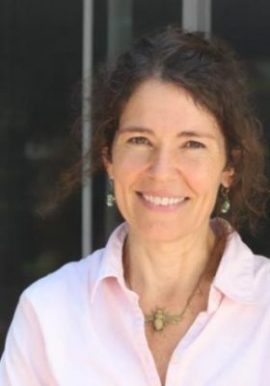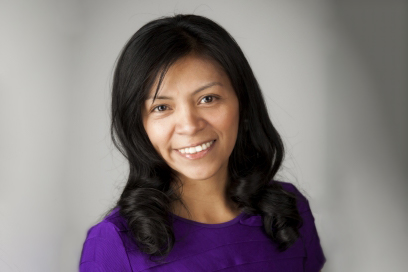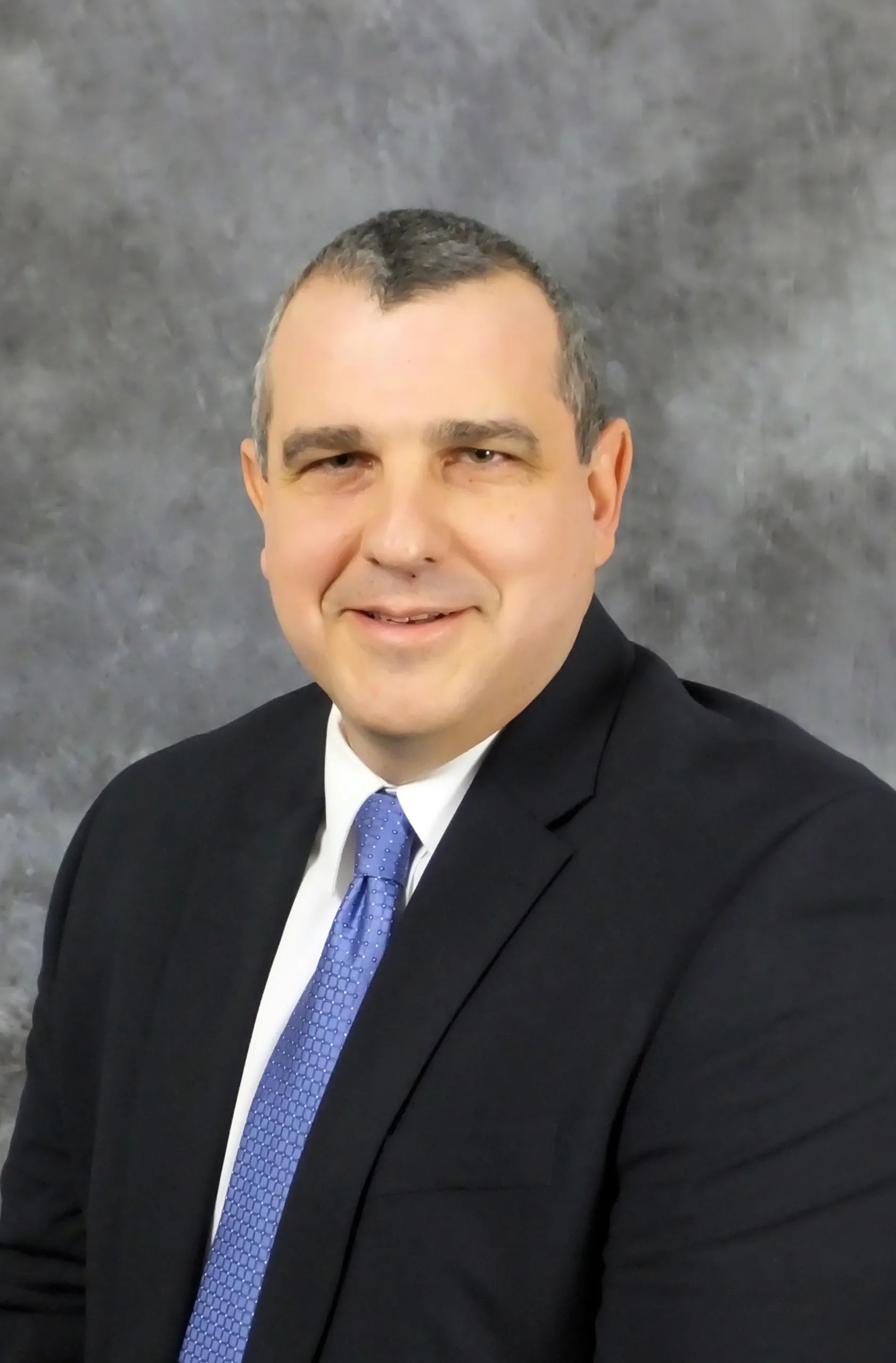Heather Swan, Eco-poet and Author
We recently sat down with Heather Swan, an accomplished poet and author who teaches writing and environmental literature at the University of Wisconsin-Madison. Swan visited Penn State Sustainability from March 20-23, 2024, as part of the Sustainability Showcase initiative, a student-founded series that has brought hundreds of experts to Penn State since 2017 to showcase innovative ideas around sustainability.
In addition to visits with Penn State classes, the Dr. Keiko Miwa Ross Student Farm, and other local community groups, Swan joined an online panel discussion exploring how to redirect climate anxiety away from destructive behaviors and instead channel them into positive, community-centered narratives and action. She also held three public events: a keynote lecture, a book reading, and a nature writing workshop. Her keynote lecture explored ways in which efforts to save declining insect populations worldwide can teach us about how to avoid apocalyptic narratives of the future.
Swan’s first book from Penn State University Press, Where Honeybees Thrive: Stories from the Field, won the Sigurd Olson Prize for Nature Writing in 2017. Her latest work, Where the Grass Still Sings: Stories of Insects and Interconnection is forthcoming from Penn State University Press in May.
During her lecture, Swan talked about exploring ways we can “help ourselves and others to embrace challenging emotions around climate.
“No one wants to have that feeling of sadness,” she said. “Allowing yourself to process the grief in a healthy way, to give yourself the space to say things are sad—this has allowed me to come out the other side more joyful, more compassionate. I find delight every single day.”
(This conversation has been edited for length and clarity.)
One thing that you addressed in your lecture is the amount of energy it takes to not be sad, which you witness in your students. There can be so much pressure on students to appear successful, and we’ve been taught that to be successful means to be happy. How do you help them navigate this pressure?
You have to establish trust. There’s almost this agreement that people need to come to silently, that they’re going to be willing to be vulnerable in a classroom. The first step for me is to get a kind of community engagement, and often I start that with laughter.
A true story that I always tell my students is that I failed gym when I was in eighth grade. I really did. It was partly because I failed the basketball unit. You had to dribble down and dribble back and they timed you, and I kicked the ball to the wall a few times. The best athlete in the whole school was in my class, saying, “C’mon, Heather!” and kind of making fun of me. And then we had to shoot 25 layups, and I got one, out of 25. And by the time I was doing the free throws, that star athlete was saying, “C’mon, Heather! You can do this!” And I got zero free throws. And when my mom asked, “What happened with my daughter? Why did she fail gym?” The teacher told her, “Oh, she’s just a really uncoordinated girl.”
I tell this to my students because it’s a way for them to realize that I have failed and I’m okay with it. I’m absolutely okay with the fact that I failed gym. And this makes them laugh. Most of them didn’t fail gym. But one part of creating community is getting comfortable enough that we can tell these stories and share things. Eventually, we go into questions like, “What does it mean that we’re on social media all the time? And what kind of pressure do we have that everybody has to look amazing—especially now that we have all these filters? It’s just crazy!”
I think there is a shift in their population in thinking about what being online unfiltered is—to try to have some more reality going on. If I ask them, “What would it mean if you didn’t have your phone for a whole day?” their social fabric is so dependent on that world that it’s hard for them to imagine it. So, I’ll invite them to put their phones down for half an hour, then see if they can do it for an hour, just to see.
There is a danger in making it seem like everything’s fine. What happens when they start to think about that is that they do realize there’s a ton of pressure to perform success or happiness.
Having them do a bit of writing, then asking them to share what they wrote, shows them that they maybe have something in common with someone else. They’re not risking a lot to say, “When I was out sitting next to the tree, this is what I heard.” And then someone else might say, “Oh, when I was by the tree, what I noticed was someone on a skateboard.” It’s a sharing that starts out really low stakes. And then when we go to something like a poem, and they’re sharing, “That poem made me feel really angry,” or “That poem was confusing to me,” there’s this level of authenticity, and the emotions can come in more naturally.
Eventually, I talk to them about how it’s hard for us to pretend that things aren’t scary right now. They know there are things that are really bleak out there. And it’s not like I’m saying, “Oh, everything’s great!” But when they are able to get in contact with something more authentic, they can have a release.
The other thing about realizing that you’re sad about something is that you realize you value that thing. It helps them channel their energy in a direction that will give them meaning, to think that they are doing the right thing with their lives. Because if you notice that you’re sad that the polar bear is dying—or a trout in a stream in your neighborhood, or whatever it is—then you know you care.
We tend to use grief and anxiety to describe the dominating swirl of emotions we experience in relation to what’s happening. But how do you hold space for anger?
Of course there’s anger. At different times, I have students that say, “This isn’t enough.” One of the things about a film like How to Blow Up a Pipeline is that it really articulates what can happen if we don’t manage that anger and instead send it out into this explosive response. The thing I always say to my students is that in thinking about the kinds of actions we can take, we have to think beyond the immediate and consider the long-term efficacy or impact.
One of the things we’re dealing with right now is that we’re so polarized, and so many of these issues are hot button. But if someone were to do something violent like [blow up a pipeline], that is not going to win anyone’s favor. No one is going to say, “Oh, okay. Let’s compromise. Let’s come to the table and chat.” Of course there’s anger. But if the anger can be channeled into something productive, then it can be useful.
Anger is not generally the emotion that I go to; mine is mostly sadness. I try not to act out of anger. I have had mindfulness training, and I try to move through it in a way that is like, “Okay. Anger is here. Let me breathe through this. Let’s bring the energy down. How can we step forward with grace?” There is a place for anger. But in my own life, that hasn’t been the most effective way for me. It’s important, but right now in this country, there’s already so much anger. I don’t want to contribute to it.
I’ve spent a lot of time reading Thich Nhat Hanh and in Buddhist communities, and one takeaway for me is to realize that these emotions come in, and they’re very real, and they can have physical effects on your body. But if you tend to them—Pema Chödrön says this, too—if you allow yourself to pay attention and care for that, and recognize where that emotion is coming from, you find that oftentimes, it isn’t the immediate thing, it’s from some other thing that’s even further down.
By getting to that place of understanding where those painful, difficult emotions are coming from, we can move through them. And I am not a master at this—I’m constantly working on it. But it has been so useful, especially in dealing with students who maybe haven’t had training to deal with these emotions. Things seem so dire, and like life is going to end. To have everyone breathe, and wait, and know that those feelings will pass, then you can get out on the other side and look back. And going through that experience is one that builds resilience for future experiences.
In one of my classes, I ask students to think about a scar that they have, whether that’s an emotional scar or a physical scar. The idea being that when we have a wound and it heals, the skin comes back stronger than it was before. This reflection is to show that they have been through something difficult, whatever it is—they lost their bicycle when they were seven, or maybe it was the loss of a person, or they had an injury and a long healing. It allows them to reflect on the fact that at one point they thought it was the end of the world, but then they managed to get through it. And then they realize that they did learn some stuff from that. They reflect on how something that at the time didn’t seem like it was making them stronger, actually was. Then, they feel empowered. Writing that down is really powerful for them, just to see that they are capable of getting through things.
In addressing the many problems that face us, you talk about needing a “mosaic of different solutions.” How do you explore that approach with students?
These problems are not simple. There are so many different actors, so many different needs to balance. One thing I’ve done is to have students imagine a lake. Then, I separate the students into different groups: a group of scientists interested in maintaining the lake’s biodiversity; a group of homeowners interested in recreating on the lake in their waterski boats, with a sandy beach that goes all the way down to the edge, and a beautiful lawn where they can have friends over. I have them play these roles, and then I give them a scenario where someone wants to build a factory at the edge of town to increase the town’s economy. Then I say, “Everybody has their own agenda for this lake. So, what if you had to come to a conclusion about this new factory?”
It shows them, first of all, that everybody in that situation has a different agenda, a different goal. They all care about the lake, but they don’t care about it for the same reasons. And for Wisconsin, that’s real. We have this going on all the time. I have them come together in a “town hall” and they have to speak from each of those perspectives. And of course, because they’re acting, they can get really animated and it’s funny—they can laugh. But eventually they need to come to a solution.
It’s a playful way for us to look at the fact that these are complex problems when we’re dealing with the natural world. Is it a resource? Is it a place to recreate? Is it a place to live? There are so many ways to think about what nature is, at all. And when you’re faced with a problem, it’s not going to be solved by one thing. So, what I’ll ask them is, “What would your discipline offer? What would an economics solution be for this? Or one from conservation biology? What would a musician do about this thing?”
That’s the idea I have about mosaic thinking. I think we often want one narrative that’s going to solve everything. But what if we had this mosaic of solutions—people all doing their own things but doing them in ways that are moving things overall in the right direction?
I think of my books as provocations. Not everyone is going to agree with all the things that people are doing that I’ve brought to the table. But finding these things helps me feel hope. It allows me to feel like we have these examples in place, and we can do more of them.
My partner works in the renewable energy world, so it’s all about math and getting things on the ground and working with people to do big grid energy stuff. And that’s awesome. I can’t do that. What I can do is tell stories. With students, it’s about showing them that there are many paths up the mountain.
You mentioned your discomfort with the word “pests,” and I wondered how you feel about the word “invasive.” Do you feel that we need to rethink our terminology?
There’s an incredible poem [called “Pest”] by Major Jackson, an African American poet who’s writing about a character who is being stopped by the police. And then he’s also talking about termites. What happens in the poem is that you realize we have used this language to make categories not just for insects or animals we don’t like, but also for human beings we don’t like. Who is an “alien?” What’s “invasive?” There are so many ways that we use language to exclude.
It’s interesting for me to think about what landscape restoration would look like if we were thinking in terms of adaptation to the present instead of looking back to some romanticized past. Sometimes, where I live, what happens is that there’s a forest, and someone says, “Oh, we don’t want a forest there—we want the ‘right’ landscape: a prairie.” And suddenly there’s money to return that forest to a prairie. And that’s great. We’re restoring the landscape.
But at this particular moment in history, because there is so much destruction of landscape from development, and so many landscapes that are disappearing, I sometimes wonder if that’s the best choice right now. Because what we’re doing is eliminating the homes of so many species that are living there—so many birds, so many mammals, so many insects. And what we know from Suzanne Simard’s work, and from Merlin Sheldrake’s work, is that there are these incredible systems underground that we don’t even understand yet.
I’m not saying we shouldn’t be doing those projects—they’re absolutely important. But I think we have to be careful about thinking that we know best. We need to have a little bit of humility. If the climate is changing, are those same species going to survive now? We have seen that some trees are moving. Certain insects, animals and plants are moving into new spaces and new relationships are forming. How do we know, then, what the perfect scenario is? I am absolutely supportive of restoration, but I think we should be thoughtful. Something we haven’t seen before that we might name “invasive,” may actually be something that is going to survive in this new climate we don’t really know much about. It’s a very controversial topic. I’m very careful about it because I don’t want to sound like I’m anti-restoration.
It must be so refreshing for your students to see that you’re grappling with these issues, too, and allowing for that uncertainty. Those of us who are trying to know how to talk to students about what’s happening can feel so much pressure to try to offer something to hold on to. It’s a real relief to imagine that we’re allowed to have the same sort of uncertainty that they have—and the sadness, and the joy, and the wonder, and the playfulness—all of it.
I say it’s an invitation. I say, “I am not here to give you my ideas. I’m giving you all these things to think about—all these authors who have different arguments and different ideas—so what do you think about them? This is the invitation for you to figure out what you value and what you think—and hopefully, to be able to communicate with other people about your position. Let’s think about all these different perspectives together.”
One of the things that’s tricky about academia, particularly in the humanities, is that we teach argumentation, which is important, but we don’t teach compromise or collaboration very well. There is a shift happening. But one thing I remember about being in grad school was this fear of being wrong—a fear of not having something smart enough to say. Part of my work has been sort of pushing back on the idea that one person has to come up with some brilliant answer to everything and be the top dog, and instead to say, “Here are some questions I’m grappling with. What are your thoughts?” Let’s think about how we can build something instead of cutting everything down.
I remind them all the time that I don’t have the answers—I have the questions. I have a lot of questions. I think we all do. And we know, it’s not simple. Things are complicated. And we have so many different people who need to be cared for and seen. So, we need lots of answers. We need many paths.






